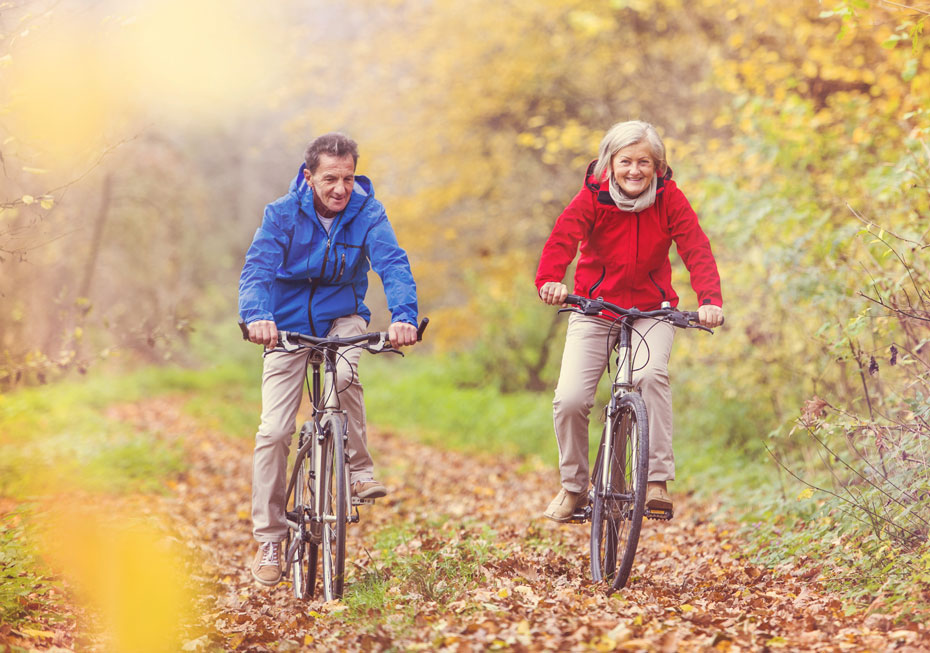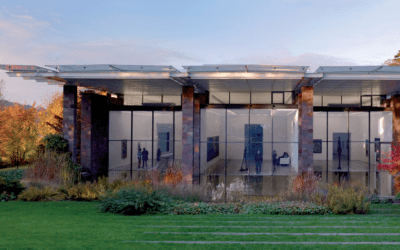Physical activity is always a good thing. It also improves our life expectancies. There are countless ways of how we can exercise and it varies depending on what a person needs at a certain point in time. It’s even been proven that a sedentary life is riskier than aging itself. It can cause osteoporosis, high blood pressure, high cholesterol, chronic fatigue, and even depression. Regular physical activities have a positive effect on the cardiovascular system, respiratory system, nervous system, muscular and osteo-tendinous system, metabolism, and more. The most beautiful thing is, physical activity is available to everybody, one way or another!
Want to learn more? Keep reading the article by Dr. Maurizio Ponti.
It is now an established fact that regular physical activity throughout life, complemented by healthy eating habits, increases life expectancy. One of the most interesting studies was carried out on a population of almost 17,000 people aged between 35 and 74. It was clearly demonstrated that the mortality rate of people who expend at least 2,000 calories per week through physical activity is 25 to 30% lower than that of sedentary people. The level of physical activity needed to expend the required 2,000 calories corresponds to about 5 hours of brisk walking or 4 hours of moderate running per week. Only those who remained active throughout the study had a longer life expectancy and a better quality of life. However, the benefits of physical activity can only be capitalized on and persist as long as one remains active. On the other hand, it is never too early to start being active and reap the health benefits. In contrast, a sedentary lifestyle is a far more serious threat to health than the aging process itself. Studies suggest that this lifestyle alone is responsible for more than 50% of the structural and functional changes usually attributed to the aging process. Osteoporosis, high blood pressure, high cholesterol, depression, and chronic fatigue are closely associated with a sedentary lifestyle. Older people who are regularly physically active have multiple benefits, including increased work capacity, reduced incidence of cardiovascular disease, reduced high blood pressure, increased bone density, increased lean body mass, and reduced body fat. These observations are corroborated by the results of numerous scientific studies, including one conducted over 23 years. The participants were divided into two groups; one subjected to regular aerobic training and the other to no activity. The results were clear. In the active group, compared to the sedentary group, there was:
- a 10% reduction in body fat – a relative decrease in resting heart rate of 10 beats/minute
- an increase in maximum heart rate during the exercise of 20 beats/minute on average
- a significant drop in blood pressure – relative stability of maximum oxygen consumption (VO2max) with advancing age (loss of only 13% in the active group compared to 41% in the sedentary group).
Why and how does regular physical activity improve our health?
Effects on the cardiovascular system
As we age, the cardiovascular system changes both structurally and functionally. While there is no significant change in heart rate (HR) at rest, the maximum HR achievable during physical effort is considerably lowered. The elasticity of the arteries decreases, which leads to an increase in blood pressure at rest and during exercise. Maximum oxygen consumption (VO2max), considered to be the most reliable indicator of fitness level, decreases from the age of 35 onwards, and thereafter by about 0.5 to 1.0% per year. However, while for sedentary people the decrease can be more than 1% per year, for athletes it remains at values below 0.1% per year. The decrease in VO2max during ageing has multiple causes but is partly related to a change in cardiovascular function (structural alterations in the heart muscle and its contraction capacity, stiffening of the arterial walls, reduction in the volume of large and small blood vessels, decrease in maximum heart rate) and partly to the reduction in lung and muscle function. Senior citizens can derive considerable benefits from exercise for their cardiovascular system. These benefits are comparable to those observed in younger adults, and can be achieved even with occasional physical activity. VO2max levels can increase in previously sedentary older people who undertake regular cardiovascular training.
Effects on the respiratory system
The respiratory system also undergoes structural and functional changes with aging, resulting in reduced elasticity of lung tissue and the chest wall. Thus, there is a simultaneous reduction in respiratory flows and volumes of 40-50% after the age of 70. This reduction is compensated for by an increase in the respiratory rate in order to maintain sufficient cardiac oxygenation. The change in respiratory function does not, however, limit the ability of older people to engage in physical activity, provided that there is no underlying bronchopulmonary disease (emphysema, chronic lung disease). In fact, only high-intensity aerobic activity is likely to reveal the constraints due to the age-related alterations listed above. Nevertheless, the deterioration of respiratory functional parameters is considerably more marked in sedentary individuals, whereas regular physical activity slows down the progression of this deterioration, acting mainly on the respiratory musculature.
Effects on the nervous system
Significant changes occur in the central nervous system (CNS) and the peripheral nervous system (PNS) during aging. The daily loss of neurons in the brain, spinal cord, and peripheral nerves is estimated at 50,000 to 100,000. While reaction time increases, nerve conduction velocity decreases by 10-15%. Interestingly, regular physical activity has been shown to slow down the degradation of reaction time. The reaction time of senior athletes is even shorter than that of younger, sedentary adults. In addition, research in neurophysiology has shown that physical activity can slow down the aging of nerve cells and improve their functional capacity. In addition, physical activity has positive effects on reasoning faculties and on the level of anxiety felt by certain seniors and their psychological condition. More recent studies have also confirmed the preventive effect of physical activity on Alzheimer’s disease.
Effects on the muscular and osteo-tendinous system
Muscular strength decreases by 20% from the age of 65. This process is linked to a loss of muscle fibers and a reduction in the volume of the remaining fibers, particularly fast muscle fibers. This phenomenon is not only due to age but also to a large extent to physical inactivity. Indeed, many of the structural alterations in muscles initially attributed to age are also observed in young but sedentary people. Bone mineral density also decreases with age. This reduction is predominant in women but is not uncommon in men. It is estimated that women lose about 1% of their bone mass each year from the age of 35, while in men the loss starts at the age of 50 and reaches 10-15% by the age of 70. The rate at which an aging person loses bone mass depends in part on the level and intensity of physical activity. The loss of bone density naturally leads to lower bone strength and favors the occurrence of fractures, especially of the neck of the femur, wrists, and vertebrae. These considerations should also be taken into account in sedentary individuals who start physical activity late in life, as physical activity in the presence of insufficient bone mass may favor the occurrence of stress fractures. In this situation, it is useful to have your bone density measured before resuming physical training.
In older people, regular physical activity including muscle strengthening increases both muscle volume and bone density. The improvement in muscle strength may even be greater in percentage terms than that observed in younger subjects. With age, tendons and ligaments undergo structural alterations that reduce their strength and elasticity. It has been observed that these alterations can be reversed with regular physical activity. Furthermore, it has been shown that articular cartilage degrades at a more accelerated rate when it is not regularly subjected to regular compression and decompression forces, which is the case when one is inactive. In older people, a significant reduction in joint flexibility has also been observed. The main cause is the lack of movement of certain joints which are not used to their full extent during everyday activities. This loss of flexibility is also due, but to a lesser extent, to changes in the connective tissue (ligaments and tendons), muscle tissue, and joint capsules. Training programs including stretching exercises increase joint mobility and flexibility in older people.
Effects on metabolism
Basal metabolic rate (which represents the energy consumption to run all vital processes at rest) decreases with age. This is also the case for VO2max, defined above. A large part of this reduction is related to a decrease in lean mass (active cell mass) which is gradually replaced by fatty tissue (fat mass). This phenomenon occurs even in the absence of weight gain, particularly in the case of poorly balanced and often overly restrictive diets leading to an accelerated loss of lean mass rather than fat mass. This tendency towards adiposity leads to disturbances in sugar metabolism and the development of diabetes. Regular physical activity, by maintaining lean body mass, has the power to reverse these trends.
Effects on thermal regulation
Age is traditionally associated with reduced heat tolerance. However, studies indicate that aging alone is only partly responsible for this phenomenon, but in a much less significant way than a sedentary lifestyle. It has been observed that in older people, sweating in response to physical exercise is delayed and reduced due to a lower density of sweat glands associated with a decrease in the body’s hydration status. Regular exercise results in a more effective response from the sweat glands but also in an increase in their number. Ultimately, regular activity promotes heat tolerance.
How to develop your training program
Background and ability
A senior citizen who has been sedentary up to now but who has decided to take up physical activity should undergo a medical examination, which should include a check-up of the cardiovascular, respiratory, and osteoarticular functions. Over the age of 50, this examination should include at least an exercise electrocardiogram (or stress test). This stress test makes it possible to assess the current state of physical fitness, aerobic capacity, adaptation of heart rate and blood pressure to physical effort, and to detect possible coronary disease. If there are no specific contraindications, a personalized training program can be drawn up. Exercise can be carried out in different ways: under supervision, independently, or in a group. People with risk factors or certain medical conditions can undertake physical activity, but with due regard to their own limitations.
Recommendations for exercise
The four main elements to consider when designing a training program are the type of exercise, intensity, duration, and frequency. In addition, it is important to train the different components of fitness, specifically the cardiovascular system, muscular strength, flexibility, balance, and agility. Because of the great differences between older people, it is essential to adapt the training program to the needs of each individual. The type of exercise to improve cardiovascular function can include a variety of activities, such as walking at a steady pace, cycling or exercise cycling, swimming, or cross-country skiing… These are aerobic (or endurance) activities that provide cardio-circulatory benefits but do not place undue stress on the joints.
The recommended duration of each session should be between 30 and 40 minutes, ideally with a frequency of 4 to 5 sessions per week. The intensity of the effort should be prescribed by the doctor after a functional assessment (Conconi test, lactic acid measurement, etc.). The heart rate is considered a good indicator of intensity control and is easily measured with a heart rate monitor. However, the huge difference in values and in the response to exercise that can be observed in older people prompts the use of a functional test rather than the usual formulas or scales used to determine this reference parameter. This approach provides the best results and reduces risk. However, it should be remembered that in all cases, and for a frequency of 3 to 4 training sessions per week, the intensity of the exercise should be high enough to adequately stimulate the cardio-circulatory and respiratory systems. The training program should also include a specific section for strength training, with exercises to be carried out using equipment designed for this purpose, or in the water. In this case, the water can be used as a resistance force. For older people, strength can also be trained adequately with floor exercises. In view of the possibility of counteracting the decrease in volume and loss of muscle fibers observed in the course of aging, strength training should be an integral part of every training program. This training should always be accompanied by a series of stretching exercises to maintain muscle and joint flexibility. Finally, balance training should not be neglected either. It is very important, especially for the elderly, and is fundamental to reducing the likelihood of falls. Each individual’s body reacts and adapts in a different way to the introduction of regular physical activity, but the necessary adaptation time is usually between 4 and 6 weeks, during which time the intensity and time of training should be increased very gradually.
Given the age-related structural alterations and reduced recovery capacity, it is very important to always warm up properly and respect recovery times. The training program should be reviewed and readapted regularly. In addition, an annual medical check-up is recommended as a follow-up.
Conclusion
The influence of physical inactivity on the aging process has long been underestimated. Fortunately, the image of the inactive senior citizen is less and less a current image. In the light of what has been said, appropriate and effective physical activity, even if started late but practiced regularly, is highly recommended whatever the age. Regular and sustained physical activity is, in fact, one of the most effective interventions for slowing down or even repairing certain physiopathological alterations linked to advancing age. Science does not yet have any other means or medication to offer whose beneficial effects are equal to those provided by physical activity. It is a real fountain of youth, easily accessible to those who wish to experience its benefits.










